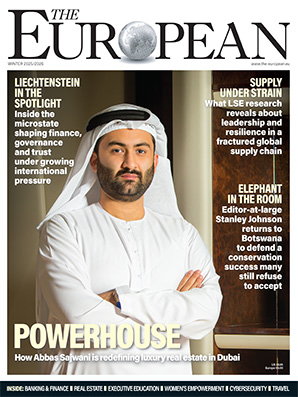Structured Products: a growth tool for 2017

During the first part of 2017, the financial markets have followed positive trends. Despite the uncertainties surrounding US government policies and Britain continuing its process of leaving the EU, global equities rose further in the first quarter 2017 thanks to economic statistics that were still as well oriented around structured products. As expected, a 25 basis points increase in federal funds rates was decided at the Monetary Policy Committee (FOMC) meeting in March, and two other increases were mentioned for 2017. The $1,000bn infrastructure programme lead by Donald Trump stimulated the US economic growth and sustained the bullish trend on all US domestic enterprises. These elements were aimed at sustaining the steady growth of the global equity markets. With this market increasing gradually, the level of volatility remained at historical lows. Even fears of a ‘Frexit’ as the French Presidential election played out did not stimulate the implied volatility, compared to the levels of the US Presidential one.
This shows that the CBOE Volatility Index (VIX Index) might not be as relevant anymore in assessing market stress. On the other hand, despite the rise in US dollar interest rates, the euro and Swiss franc remained at low levels. Finally, yields on bonds remained low, and spread on high yields tightened further. Hence, the difficulty today for is investors to find investments with a potential upside or an interesting yield; against this backdrop Structured Products offer an interesting alternative.
What was done?
To take advantage of this bullish trend on the equity market, investors have looked significantly to yield enhancement Structured Products, such as Express Certificate. In fact, the early redemption feature embedded in the product enables the holder to capture a fixed or conditional coupon paid on a regular basis and to be redeemed early in case the market rallies. The investor is then allowed to invest in any other stocks of his/her choice. Furthermore, the partial capital protection included in the product (barrier level or low strike) means it won’t be fully exposed to a market downturn until the barrier level. Compared to a direct investment, the investor then has the opportunity to get yield and benefit from the market rally while being protected from a potential market correction.
These types of Structured Products can be implemented by playing the decorrelation between different underlyings to extract value. To maximise the yield in this low-volatility environment, multiple risks can be taken by accumulating several underlyings in the note (a worst of feature). The more stocks that are not correlated, the higher the coupon is. Hence, investors are looking at structures with non-correlated stocks to generate higher returns.
Nonetheless, in specific thematic sectors, investors have made the most out of the sector volatility. Themes, such as US consumer spending, US defense, whereby the Republican candidate promised to strengthen the US army by strengthening the Federal Budget, US tech investment, boosted by Donald Trump’s election, or European and Swiss banks, which have been misevaluated, have been a main focus on the Structured Products market industry. Also, following the defeat of Hillary Clinton – who wanted to create a commission to monitor the sharp increase in vital treatments and the cap on the amounts still to be borne by patients – US healthcare has become a major investment topic, as Donald Trump’s election removed the prospect of radical measures to bring down the prices of drugs.
In terms of commodity, the perspective of potential increases in US dollar rates impacted negatively on the gold spot and mining stocks consequently. Investors then invested in gold mining stocks to play a potential rebound of the gold spot. Yield enhancement structures on gold being penalised by the contango (situation in which the spot price of a commodity is lower than the forward price), it was more applicable to get return by selling volatility on correlated stocks with gold.
Regarding oil, the same trend occurred as the curve of price per barrel was also on an upward trend. Then, investors were playing this investment theme through oil or drilling companies or trackers like S&P GSCI Crude which were yielding more than the commodity itself.
Considering the low interest rate and the difficulty to get yield on the bond market, investors have been implementing Credit Linked Notes (CLN).
CLN are credit derivative financial instruments in which the payment of the coupons and the principal is conditional on the credit risk of a second issuer (reference issuer) or a basket of issuers. The idea is to extract value from a market inefficiency between the liquidity of the CDS and the comparable bond on the same underlying name in order to deliver to the bearer an enhanced return compared to a conventional bond investment (the positive basis). To extrapolate yield, investors were building Credit Linked Notes on several reference entities with a First-To-Default (FTD) mechanism. A First-To-Default can be defined as a Credit Default Swap on a basket of signatures. It is also a balance sheet instrument but, unlike the CDS, allows it to manage several credit risks simultaneously. Its flows are linked to the occurrence of the first credit event on one of the signatures making up the basket. The FTD is a contract that allows its holder to purchase credit risk protection on a basket of reference entities for a given nominal and maturity. The protection buyer regularly pays a premium until maturity of the contract or default on one of the reference entities. In exchange, the protection seller guarantees until maturity to the buyer that he will recover the nominal value in case of default of credit on the reference entity.
A key tool
In conclusion, Structured Products have been a key tool in asset management decision-making amid a busy political period and a recalibration of the global macroeconomic equilibrium. After the market rally in the first months of 2017, investors are trying to lock their profit by selling their long positions on equity and invest in defensive Structured Products to protect against a potential market downturn. We are now expecting some volatility from the US political situation.
Further information


